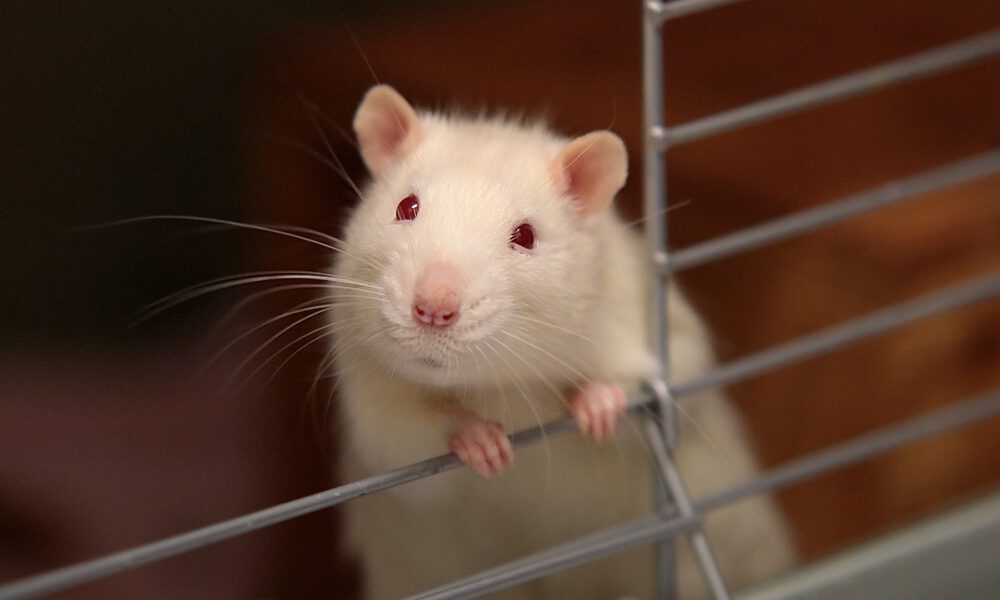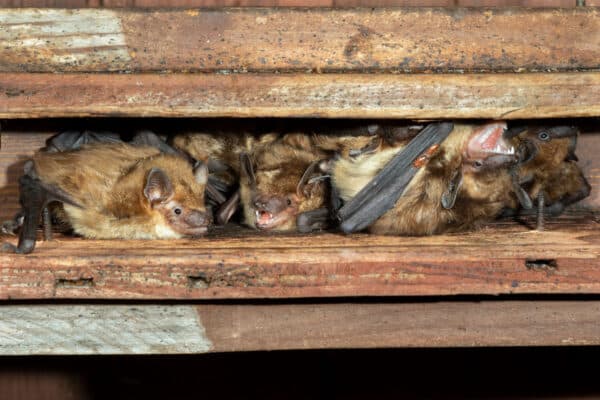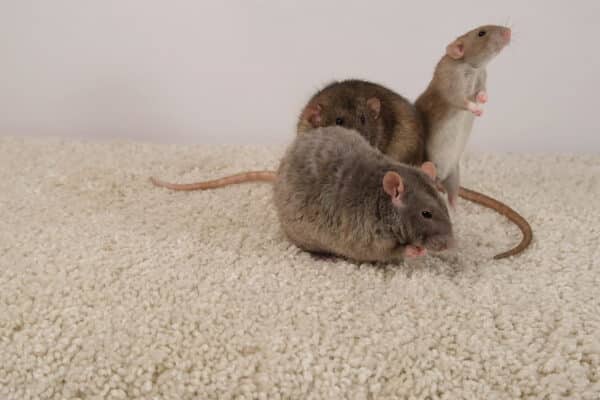
Covenant Wildlife Gets Rats Out of the House for You
Rats, if you didn’t know, are rodents. They have long front teeth that are continually growing, they carry disease, they wreak havoc on your home, and they can even make you sick.
Did you know rats are some of the most challenging pests out there? You see, rats can thrive anywhere from urban to rural areas. In this article, learn more about the types of rats in your area. In addition, learn how to prevent them from contaminating your food, damaging structures on your property, or transmitting disease and parasites to you or your family.
Then call Covenant Wildlife Removal to help remove the nuisance wildlife from your Alabama home.
The Two Most Common Types of Rats
Here in the tri-state area, the most common rats you’ll see are one of two varieties:
- Norway rats
- and roof rats
And make no mistake, these are wild animals. So if you see rats beginning to populate your yard or home, call for immediate removal by a licensed and experienced wildlife removal company.
All About the Norway Rat
Norway Rats go by several names such as the common rat, street rat, sewer rat, wharf rat, Hanover rat, Norway rat, Norwegian rat, and Parisian rat. Strangely, the Norway rat is believed to have originated in China but can be found worldwide today.
Norway rats are grayish with lighter bellies. They have excellent hearing and sense of smell. And that is good for rats, as their vision is not so good although they can see colors.
- Length: head and body can grow up to 11 inches.
- Tail length: Just shorter than the head and body length.
- Weight: between 5 and 17 ounces.
Diet: Norway rats are omnivorous and will eat just about anything, which is why they thrive in urban settings.
Reproduction: Rats begin breeding at five weeks of age and will continue until two years old. Females are fertile approximately every three weeks and produce up to five litters per year. The pregnancy lasts about three weeks, and the litter size typically ranges from 6 to 20 babies. Not to mention, female rats are known to have up to 40 rat babies per year. That can be a real problem if they are in your home attic when you could end up with a full-blown infestation of rats is not much time at all.
According to Wikipedia,
“Selective breeding of the Norway rat has produced the fancy rat (rats kept as pets), as well as the laboratory rat (rats used as model organisms in biological research).”
Yes, some people keep rats as pets. Since they are pretty intelligent and highly trainable, they make good companions for some. But if you don’t fancy a rat as a pet (nice pun), please call the wildlife removal services of your Covenant Team.
All About the Roof Rat
Often referred to as black rats or ship rats, Roof Rats are the smaller and sleeker of the two common rat varieties; the Norway rat is larger. It is called a roof rat for apparent reasons, as it likes to make its home in high places. Found worldwide, roof rats are believed to be from Southeast Asia. They are prevalent in coastal states and tropical regions.
Appearance: The roof rat is a brown and black-bodied rat with a long thin scaly tail. They also have large ears and eyes and a pointed nose. Their fecal matter is helpful in identification and measures about ½ inch with one pointy end.
- Length: head and body can grow 6 to 8 inches.
- Tail length: Same as the body or a bit longer, 6 to 10 inches.
- Weight: between 5 and 12 ounces.
Behavior: The acrobatic roof rat can be seen scaling high wires and tree branches to get to high roofs and treetops. These rodents are adaptable, but they prefer to live in attics, buildings, garages, rafters, roofs, trees, and even walls.
Diet: The roof rat eats an omnivorous diet and will eat almost anything they find. But they most prefer to eat fruits, nuts, acorns, seeds, grains, tree bark, and some meats. Also, they are food hoarders and will stash their food supply in their homes.
The Dangers of a Rat Infestation
Have you ever heard scratching or chewing or some unusual noises coming from the ceiling or walls? Not that again; you have rats in the attic. So, what’s the big deal other than keeping you up at night? There are many reasons rats are called pests and are dangerous if living in your home.
- Rodents increase your exposure to ticks, fleas, lice, mites, and other parasites they bring in from the outside. These can make your family and your pets sick.
- They will create holes in your walls, siding, and roofing just to gain entry to your home.
- Rats and squirrels cause a significant amount of damage to insulation and building materials in the attic.
- All rodents are known to chew wires to file their teeth and use them for nesting supplies. Damaged wiring may lead to fires in your home.
- Holes in the home will let extra water into the house, creating the possibility for mold and mildew.
- Wherever they roam, they will leave their excrement. And if the rats urinate in one area, it will eventually seep through the ceiling, leaving an odorous yellowish ring.
- When they get into the pantry, they will contaminate the foods they can tear open. And they will make a mess too.
- Diseases like hantavirus, lymphocytic choriomeningitis, plague, and tularemia are all carried and spread to humans through their droppings, urine, and saliva.
So, How Do Rats Gain Access to Your Home?
Rats look big, but their bodies are incredibly compactable. So, they can fit in even the smallest of spaces. And since roof rats have such excellent climbing skills, they are most likely to be found in your attic or crawl space. Norway rats, however, have heavier bodies and aren’t fantastic climbers. So, they’ll likely be found on the ground floor or in the basement.
Where Are They Hiding?
You’ll find roof rats and their offspring generally in areas with a lot of insulation. Roof rats especially will create a nest in the installation within a couple of weeks.
Norway rats are most likely to be found on the perimeter of your property. They can create nesting piles out of just about anything.
What Are the Most Common Signs of Rats?
You’ll want to pay attention to the overall state of your property on a regular schedule. This inspection routine will show you exactly where you have damage and what’s causing the rats to come in.
Here are some ways to tell if there is a rat on your property:
- The sudden appearance of tapered off droppings in cabinets, basements, attics, or anywhere else in your house indicates activity.
- Finding grease streaks on your walls left behind by their bodies as they scurry around.
- Locating random insulation and other construction materials shredded around your home.
- Discovering pantry items, books, and other things with gnaw marks on them
How Can I Prevent Rats?
Prevent rats from coming into your home with a little extra care around the home and yard. Here is what we suggest.
- Inspect the exterior of your home and seal openings in the exterior walls or the foundation of your home.
- Trim tree limbs, shrubs, and bushes away from the exterior walls of your home.
- Make sure that all outdoor trash cans have tight-fitting lids on them.
- Place garden areas, woodpiles, and compost piles a distance away from the exterior of your home.
- Remove piles of debris from your property.
Need more information about the options we have at Covenant for rat control? Contact us today.
Covenant Wildlife Removal Removes Roof Rats
This is where Covenant Wildlife Removal helps clients all over the Tri-state area. The most common way to remove roof rats is to trap them. You see, poison is not a good idea because the vermin can die in the home and create a whole different issue. Besides, the poison is dangerous around children and pets.
Since they are out at sunset and dusk, the rats will require trapping at those times. It can take a few days to get them all, especially if they get wise to our efforts. But we know how to outsmart them.
Good news! You need not worry about all that. At Covenant Wildlife Removal, we will remove the rats, find the entry points and seal them up, and finally, clean up after them. Our teams are fully equipped and experienced at getting to the source of the problem and eradicating the wildlife.
Rat Removal Service includes:
- Trapping and Removal
- Clean Up
- Disinfection
- Odor Removal
- Repair of the area
Covenant Wildlife Removal is a top-rated local family-owned, full-service wildlife trapping, removal, and repair service. We can remove a rat infestation before it becomes an extensive problem for you and your family.
Contact us or call 205-850-5760 to set up an inspection.




